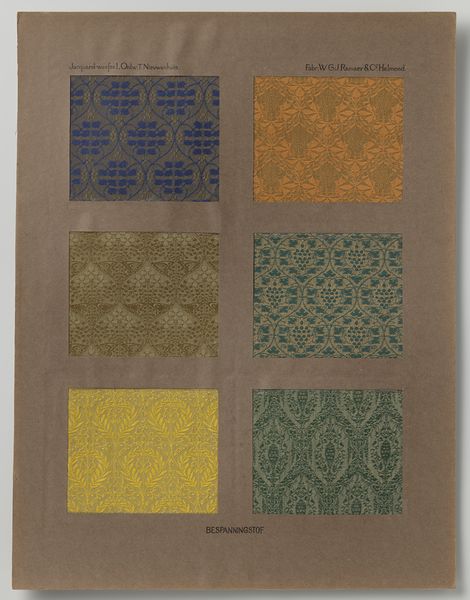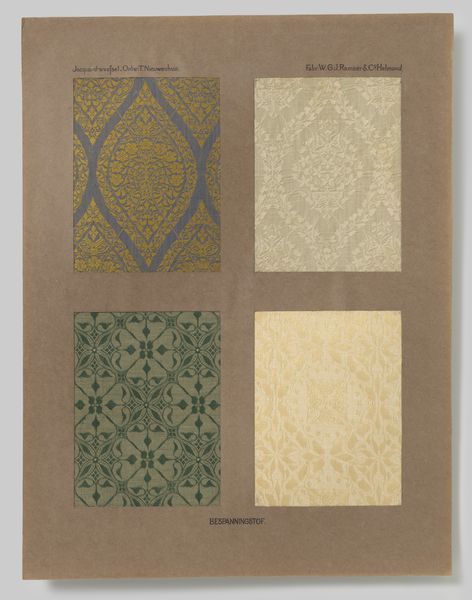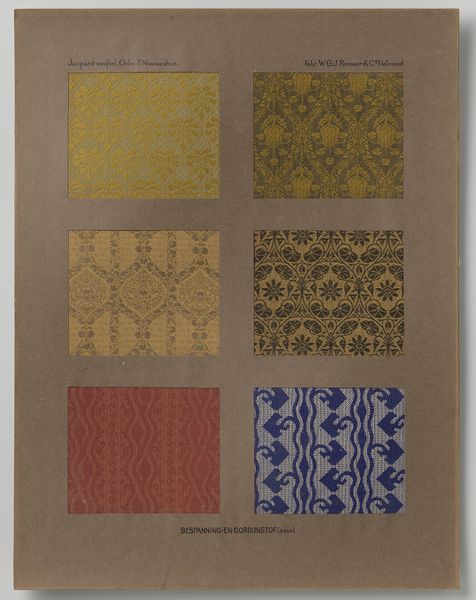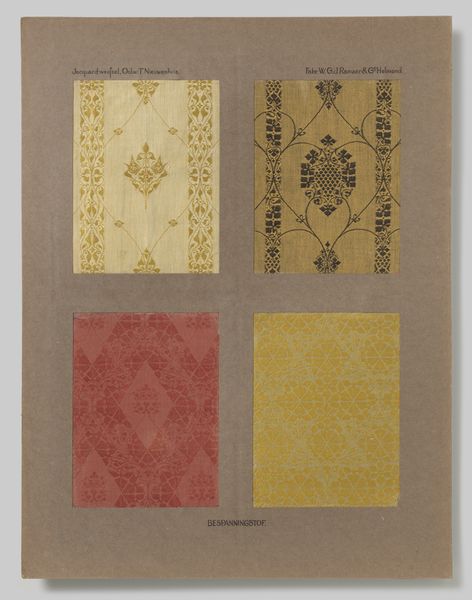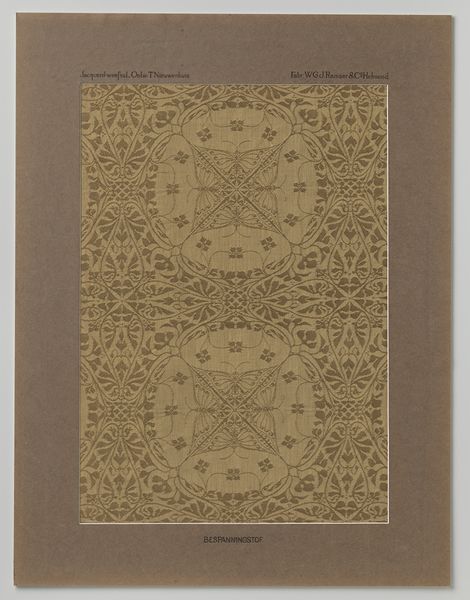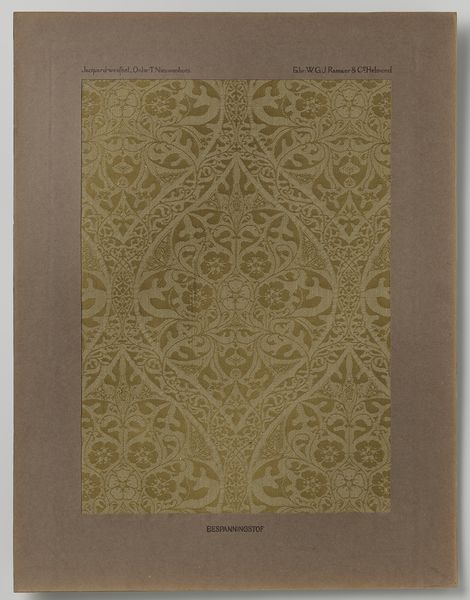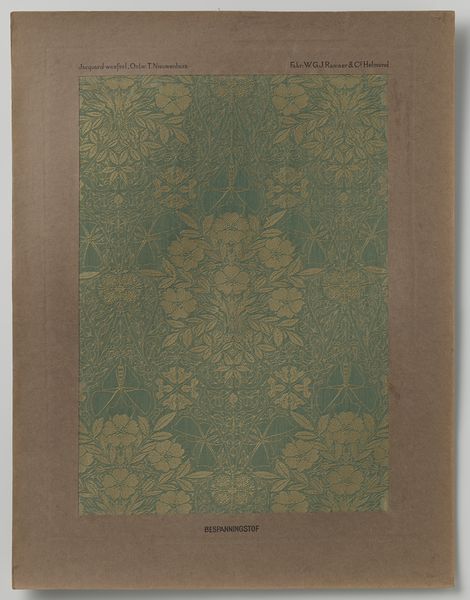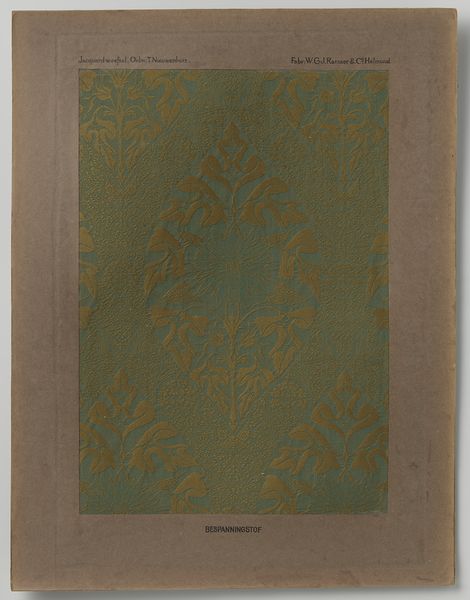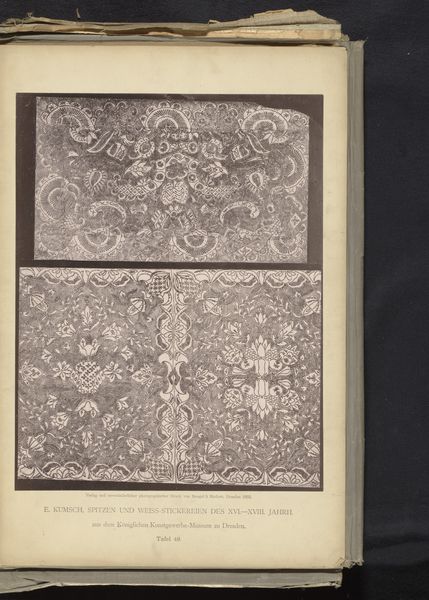
Stalen bespanningsstof naar ontwerp van Theo Nieuwenhuis in passe-partout c. 1910
0:00
0:00
textile
#
aged paper
#
toned paper
#
art-nouveau
#
water colours
#
ink paper printed
#
textile
#
imprinted textile
#
watercolor
Dimensions: height 64.0 cm, width 49.5 cm
Copyright: Rijks Museum: Open Domain
Editor: This artwork, from around 1910, is titled "Stalen bespanningsstof naar ontwerp van Theo Nieuwenhuis in passe-partout" - it appears to be mixed media, potentially watercolor and ink on paper, and features four textile designs. The patterns and muted colors give off a very nostalgic vibe. What stands out to you when you look at this piece? Curator: I immediately see the echoes of nature translated into these designs. Notice how the stylized leaves and floral motifs aren’t just decorative; they evoke a sense of growth and natural harmony which became popular during the Art Nouveau period. Each of the individual textile patterns presents a certain continuity in memory; consider for a moment that people would have looked at this and would have brought that pattern into their homes and personal lives. How might these repeated organic shapes have provided a sense of comfort and connection to nature? Editor: That's a really interesting way to think about it. It's like bringing a piece of the outside world inside. I'm curious, what’s the significance of displaying multiple designs together like this? Curator: It speaks to choice, doesn't it? This presentation gives the viewer the power of selection; they’re not just seeing one option, but a range of possibilities for expressing themselves through their domestic environment. Each design presents a slightly different mood, carrying forward a story, if you will. What does that visual democracy say about the cultural values of the time? Editor: That makes a lot of sense. I hadn't considered the aspect of choice and self-expression through these textile patterns. Curator: Exactly! And that connection to the past that these patterns carry forward through cultural memory is quite evocative. Editor: This has given me a whole new appreciation for how patterns can hold so much meaning and historical context. Curator: Indeed! Every line and color choice is embedded in a cultural matrix; to learn to see that is to learn to truly 'read' art.
Comments
No comments
Be the first to comment and join the conversation on the ultimate creative platform.
